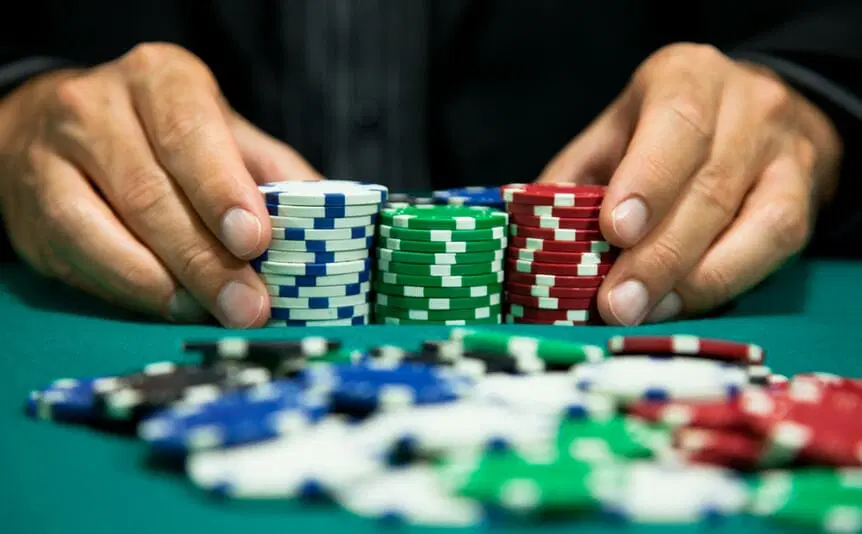Every casino game is built on one unshakable truth: the house always has an edge. In online slots, this principle is just as present as in table games, though it often hides behind bright graphics and exciting bonus features. Understanding how the house edge works—and how it affects your long-term outcomes—is key to playing smart, managing expectations, and maximizing enjoyment.
What Is the House Edge?
The house edge is the mathematical advantage Megawin that the casino holds over the player in any game. It’s expressed as a percentage that represents the average profit the house expects to make on each bet over time.
For example, if a slot has a house edge of 4%, that means, on average, for every £100 wagered, the casino expects to keep £4 and return £96 in winnings to players. This doesn’t mean you’ll lose exactly £4 every £100 spent—individual sessions can vary wildly—but over thousands of spins, that edge becomes statistically consistent.
The inverse of the house edge is known as the Return to Player (RTP). A slot with 96% RTP has a 4% house edge. Together, they make 100%, representing the entire betting pool distributed between wins and casino margin.
How the House Edge Is Built into Slots
In slot machines, the house edge is built directly into the game’s payout structure through symbol frequency, payline design, and bonus probability. Every possible outcome of a spin has a specific probability and payout attached to it.
Let’s break it down simply:
- Winning combinations are less frequent than losing ones.
- Big payouts occur rarely but help maintain player excitement.
- Bonus rounds offer large prizes but are balanced by long dry spells.
Game developers use these elements to create a balanced experience—rewarding enough to keep players engaged, but mathematically guaranteed to return a consistent profit to the house over the long run.
Why the House Edge Varies
Not all slots have the same house edge. In fact, it can vary significantly between games, even within the same casino. Most modern online slots have RTP values ranging between 94% and 97%, though some progressive jackpots and branded games can dip lower due to higher prize contributions.
Here’s a rough guide to how different RTP ranges compare:
- 98% or higher: Extremely player-friendly (rare, often in classic 3-reel slots).
- 96%–97%: Standard for most reputable online slots.
- 94%–95%: Moderate house edge, common in progressive jackpot titles.
- Below 93%: High house edge; less favorable over time.
A few casinos offer “high RTP” versions of popular games, but others quietly adjust settings lower depending on jurisdiction. It’s always smart to check the paytable or information screen for the specific RTP before you play.
Volatility and House Edge: Two Sides of the Coin
While RTP and house edge describe long-term return, volatility measures short-term risk and reward. A high-volatility slot may still have a 96% RTP but delivers it through rare, high-value wins rather than frequent small ones.
This means two slots with identical house edges can feel completely different in practice:
- A low-volatility slot pays often, giving a smooth, steady experience.
- A high-volatility slot can swing dramatically between long losing streaks and massive wins.
Understanding both metrics helps you choose games that suit your bankroll and risk tolerance, even when the underlying house edge remains constant.
Can Players Beat the House Edge?
In the long term, no. The house edge ensures that, statistically, the casino will always come out ahead. However, in the short term, variance can work in your favor, and that’s what makes slots so thrilling.
Players can’t change the underlying math, but they can improve their odds of favorable results by:
- Choosing slots with higher RTP values.
- Managing bankroll effectively to withstand variance.
- Taking advantage of bonuses, free spins, and cashback offers that offset the edge temporarily.
- Stopping when ahead—locking in short-term wins before probability catches up.
The key lies in recognizing that while the house edge can’t be beaten consistently, it can be managed strategically.
The Psychological Edge
Slot design is built not only on mathematics but also on psychology. Developers use near-misses, sound effects, and animation cues to create the illusion of control and potential. These features encourage continued play, allowing the house edge to work its long-term magic.
This doesn’t mean slots are unfair—just that they’re expertly designed to maintain engagement while keeping the math balanced in the casino’s favor. Recognizing this helps players make informed, emotionally grounded decisions during gameplay.
Why Understanding the House Edge Matters
Knowing the house edge doesn’t make you immune to losses, but it does give you perspective. It helps you:
- Set realistic expectations for long-term play.
- Identify better-value games through RTP comparison.
- Control session time and budget based on volatility and return rate.
Most importantly, it shifts your mindset from chasing luck to playing with awareness, making the game less about illusion and more about entertainment value.
Final Thoughts
The house edge is the invisible force behind every spin. It’s not a trick—it’s the mathematical foundation that keeps casinos operating and players coming back for the thrill of possibility.
While you can’t outsmart it, you can respect it, learn from it, and use it to play smarter. Choose high-RTP games, manage your bankroll wisely, and remember: in the short term, variance can make anyone a winner—but over time, the house edge always balances the books.
In the world of online slots, knowledge is your best tool—and understanding the house edge turns a game of chance into a game of strategy.

